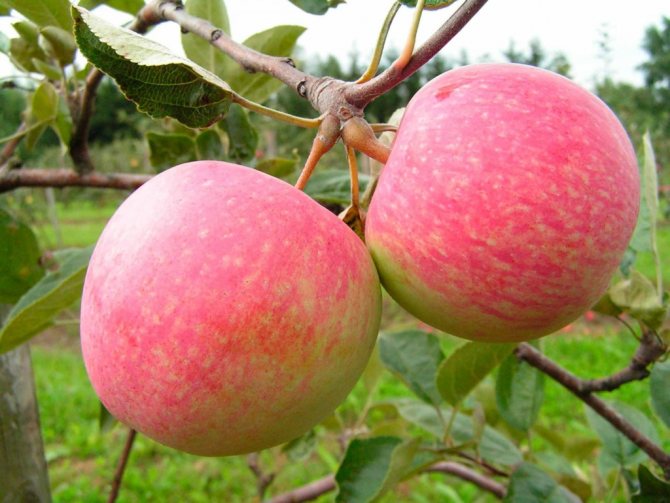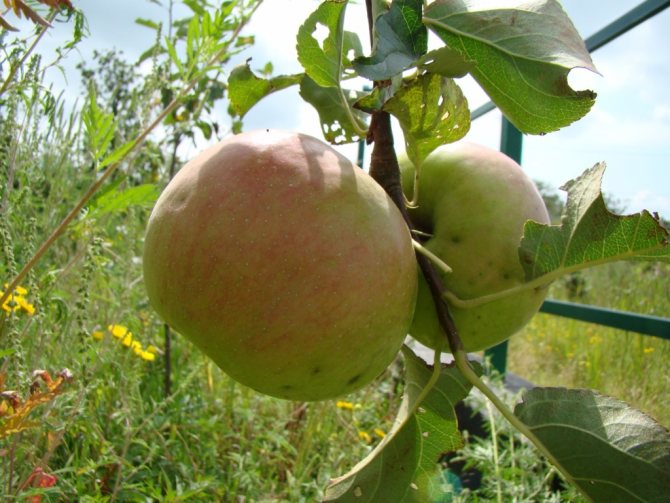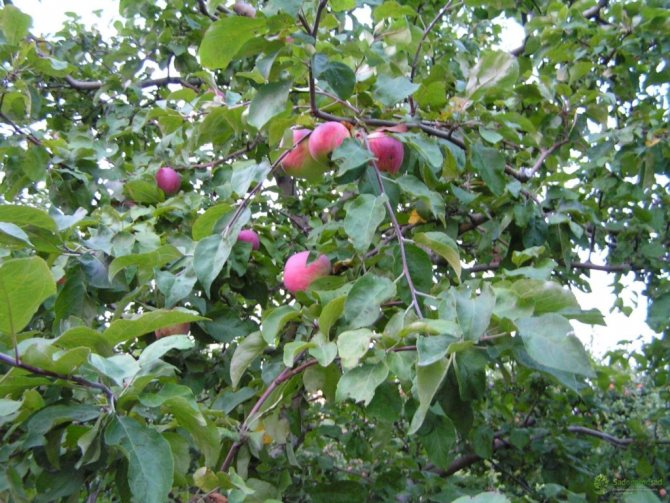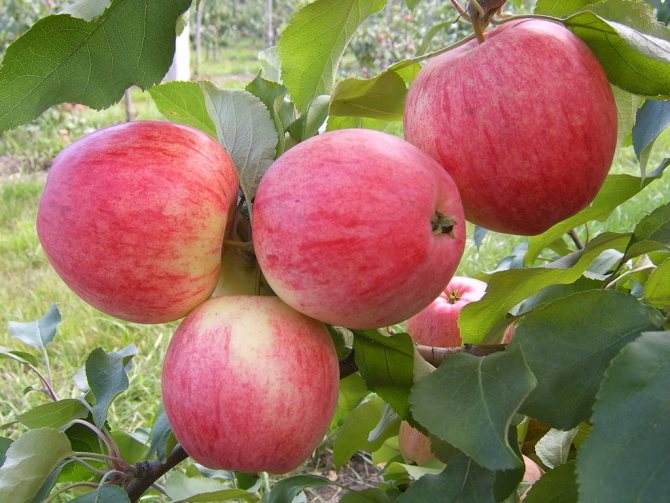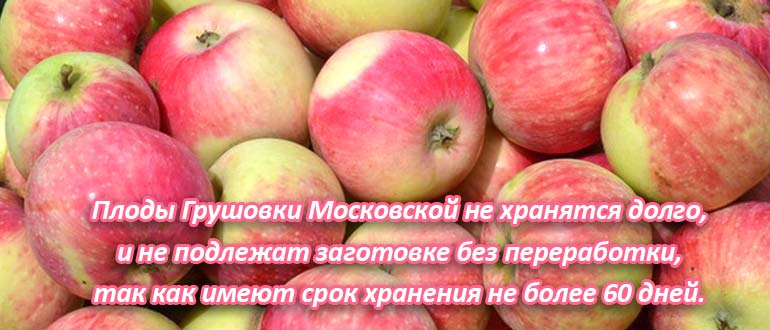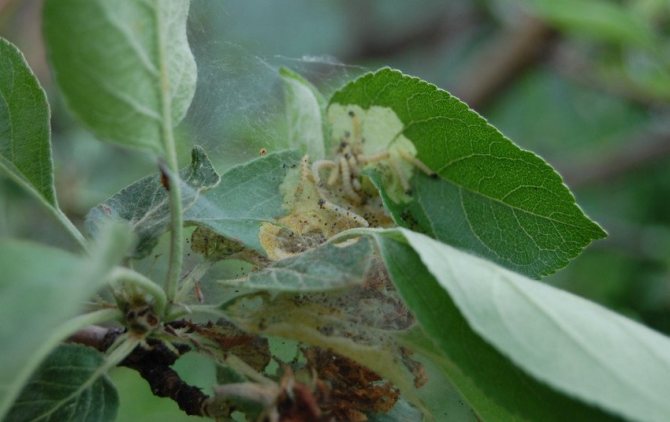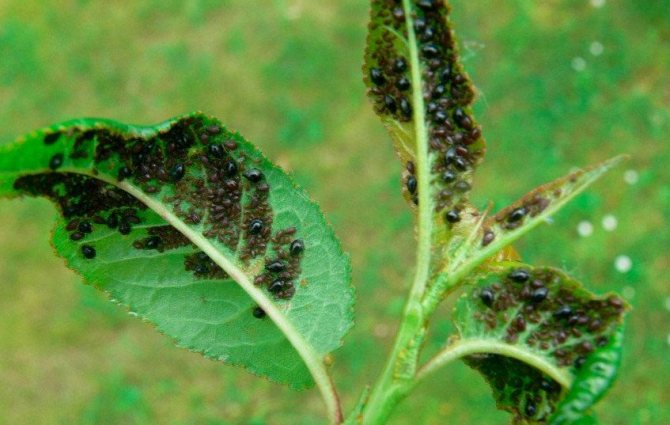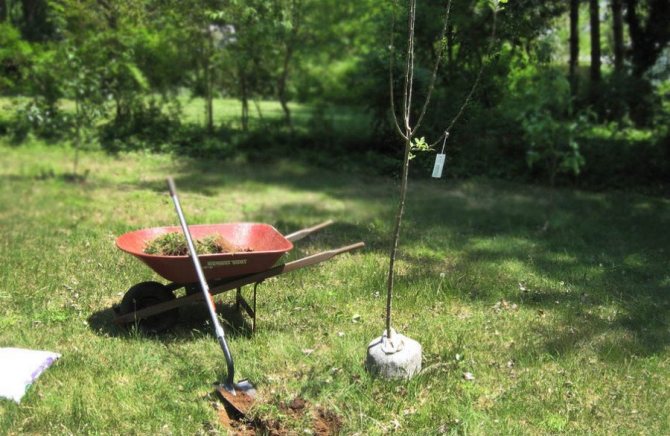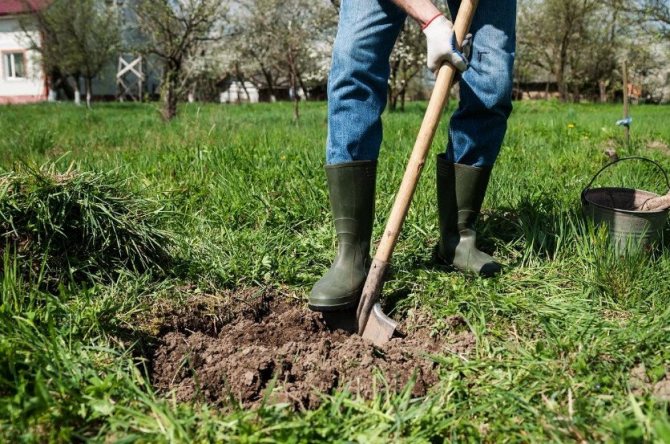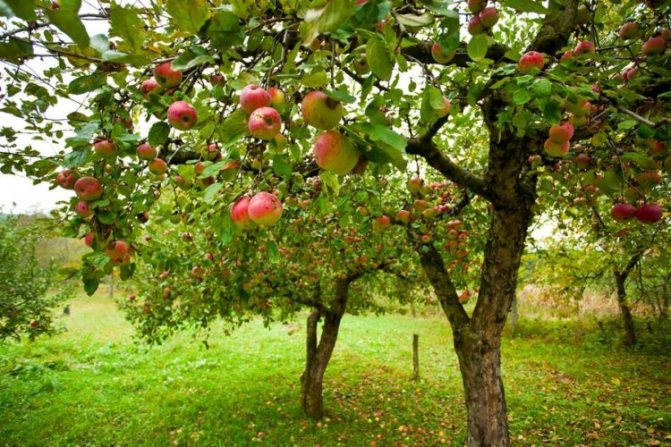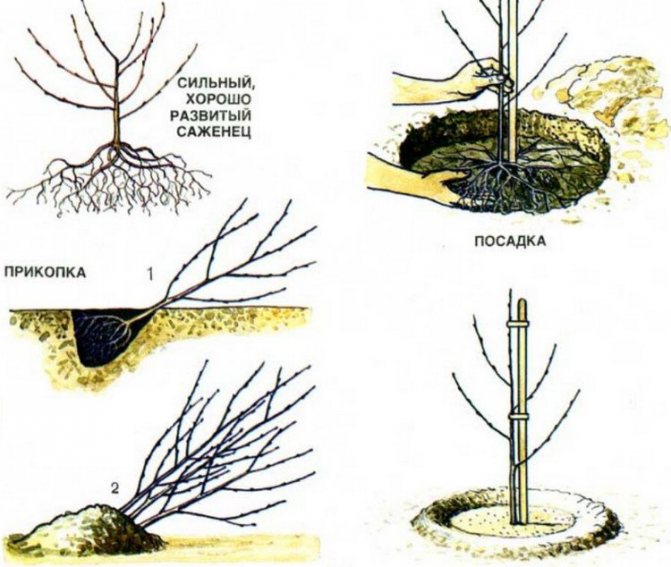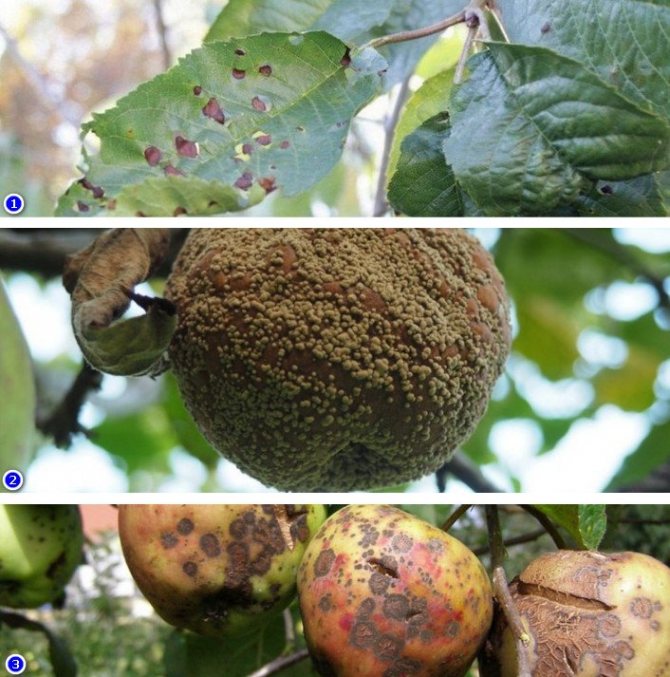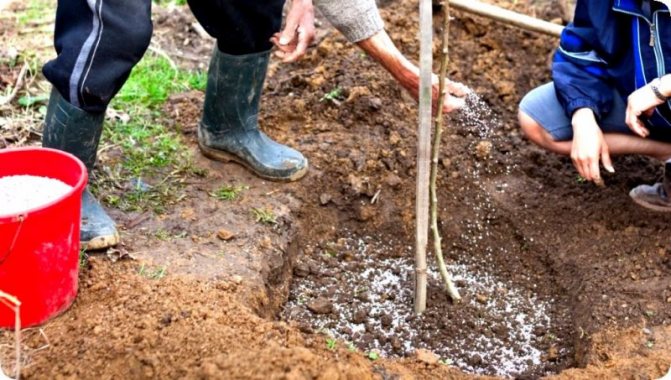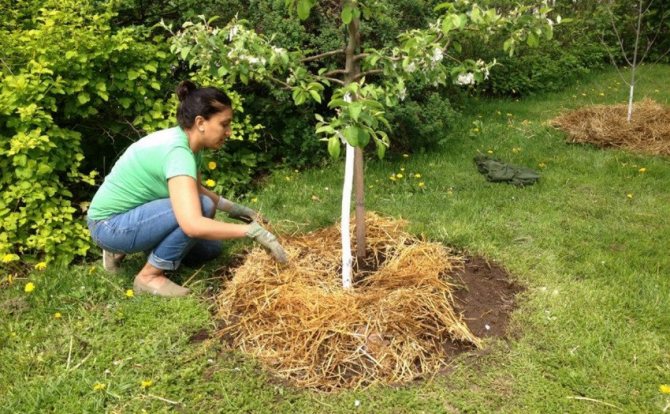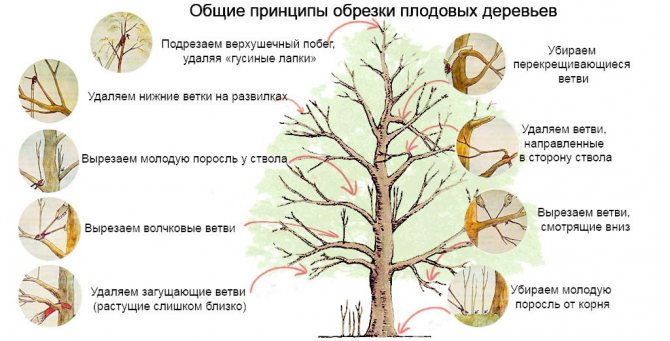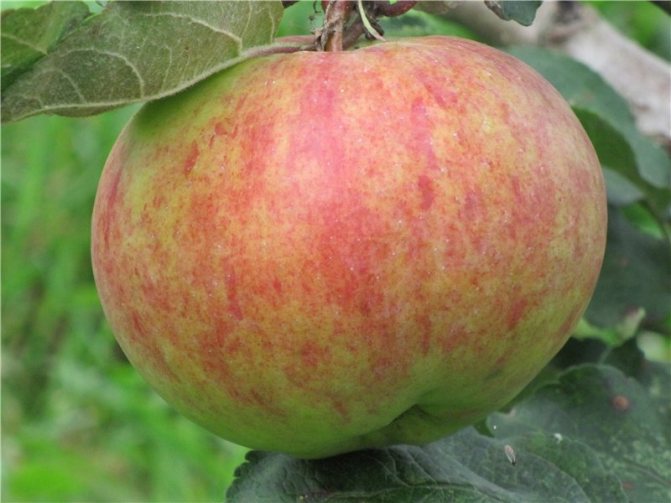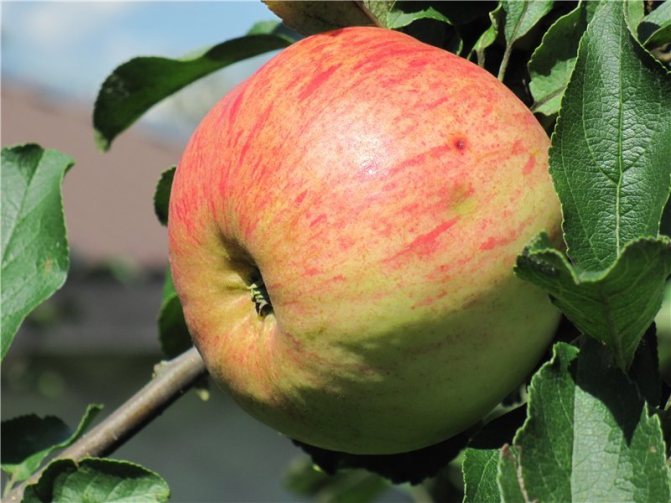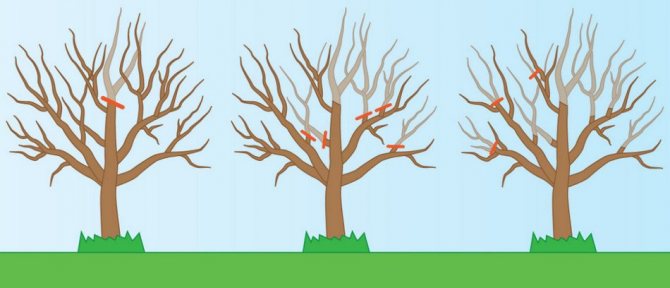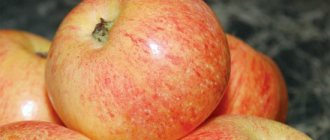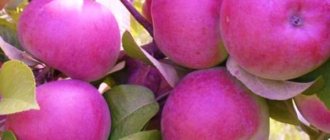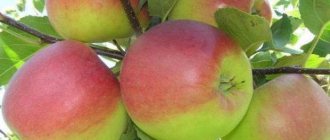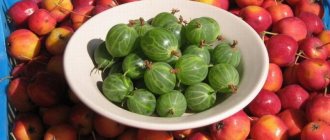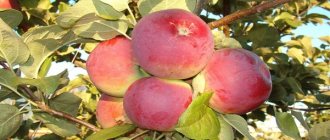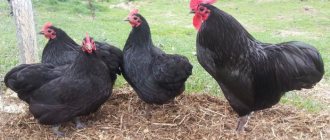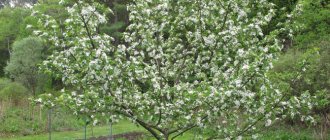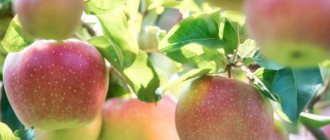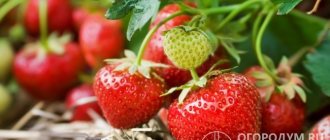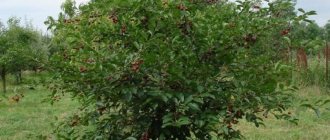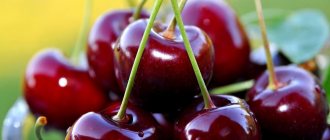»Gardening» Apple tree »Apple tree Grushovka Moscow - the pride of Russian selection
0
105
Article rating
The founder of Russian agronomic science, A.T. Bolotov (1738 - 1833), described the Grushovka Moscow apple tree as an old Russian variety of folk selection. Already during his lifetime, it was widespread and still remains in our gardens, delighting us with juicy apples.
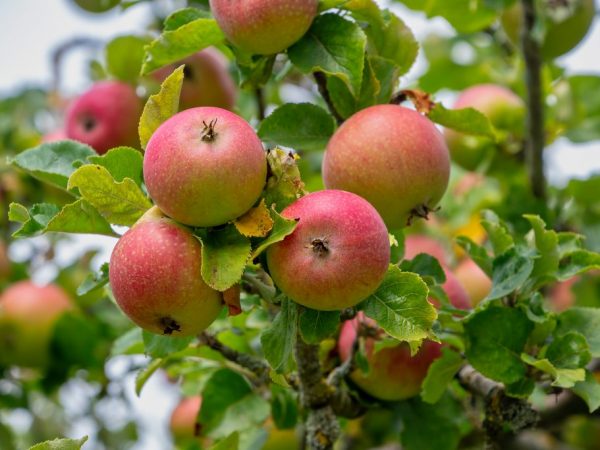
Apple tree Grushovka Moscow - the pride of Russian selection
The history of the creation of the variety
The Grushovka Moskovskaya variety has been known for about two hundred years. It is believed that it was bred thanks to natural selection - in other words, it was formed during the wandering in the Black Earth, Ural and Siberia.
The name of the variety was invented by the biologist A. Bolotov, to whom the crown of a young tree resembled a pear. The Moscow apple tree was named in order to delimit it from the German Grushovka.
In the 19th century, the plant gained popularity in North America. In 1947, it was included in the State Register of the Northern Regions. At the moment, the tree is grown throughout Russia, Belarus, Kazakhstan.
Early
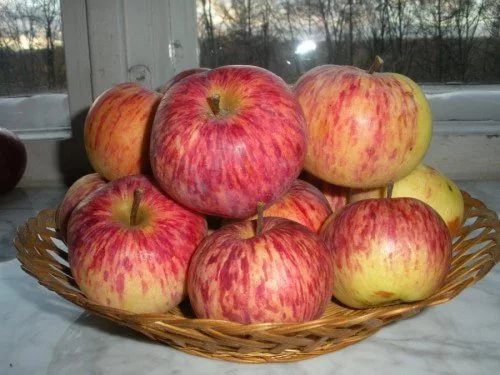

Experts regard this variety as the most successful. The fruits of the tree are several times larger than those of the ordinary Pear. The yield can reach up to 200 kg from an adult tree. The plant does not bear fruit annually, but rather after a year. Fruits ripen unevenly, the tree is resistant to scab. The early variety Grushovka is used only for individual consumption, it is not used for commercial purposes.
Main characteristics
Grushovka Moskovskaya is an apple tree reaching a height of about 7 meters. The crown is branched and usually has a diameter of 8 meters, becoming more spreading as it grows, with drooping branches. If the plant is more than 10 years old, the crown becomes spherical.
The leaves are on long petioles, elliptical, elongated, with small denticles along the edges. They are usually colored green, less often yellow-green. There may be keeled leaves. Young foliage is pubescent, in an adult, fluff is either absent or insignificant.
The petals in the buds are colored pink, changing the hue to light pink, almost white as it blooms. Diameter - 2.5 centimeters. The bark of the apple tree is brown with an orange or yellow tint. The seedlings are more intensely colored. The branches are smooth, without thorns.
The tree lives on average 60 years, bearing fruit already 4 years after planting.
Description of fruits
Pears apples are either small or medium. The maximum weight is 120 grams, the average is about 80. They are spherical in shape, slightly flattened, but they can also be onion. The skin is quite thin and has a pleasant smell. Since the fruit has a layer of natural wax, it can appear greasy.
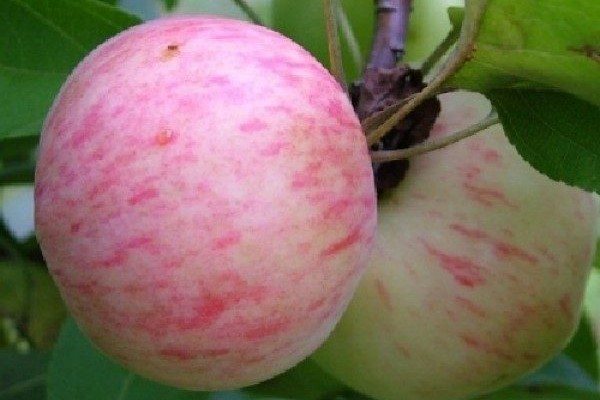

The pulp is juicy and friable, the color is white, but it can be creamy or pink. The taste is delicate, delicate, kilo-sweet or noticeably sour (if the composition contains a lot of vitamin C). In an overripe crop, the pulp is dry and mealy. The calorie content of apples is 47 kilocalories per 100 grams.
For commercial purposes, it is impractical to use the fruits, since they are poorly stored and do not like transportation.
Pollinating trees
For pollination of apple trees of the Grushovka Moskovskaya variety, pollination with pollen of other varieties is necessary. The following varieties of apples act as excellent pollinators:
- Antonovka.
- Folding.
- Anis Striped.
- Cinnamon.
- Bellefleur Chinese.
Cross-pollination requires 3-4 varieties. In fruit orchards, pollination can take place with the help of bees, so it is advisable to place trees at a maximum distance of 60 meters from each other.
Diseases and pests
In general, the culture has an average immunity to disease. Most often, she suffers from scab, powdery mildew, fruit rot. For prevention, trees should be treated with fungicides: in early spring, during bud break, and then after flowering.
From powdery mildew and scab, a solution of Bordeaux mixture, copper oxychloride, Horus or Skor preparations help well. Fundazol saves from fruit rot.
You can save a tree from diseases with the help of simple preventive manipulations:
- constantly rid the apple tree of old, dry and injured branches;
- before placing a tree in a permanent place, you need to keep the land "fallow" for at least 2 years;
- if necessary, spray the apple tree with disinfectants and medicinal products;
- in the autumn period, it is imperative to collect and burn fallen leaves, since fungal spores can pass from the foliage to the ground, where they calmly survive the winter.
If we talk about pests, then most often the apple tree is attacked by aphids, apple moth, moth, apple blossom beetle and some others. It is aphids and moths that pose the greatest danger. The first one is generally able to quickly disperse on the tree and suck out all its juices, and this provokes the leaves to fall off. The caterpillars of the moth also feed on the juices of leaves and shoots, gnawing at them.
To get rid of parasites, you can use Bordeaux liquid, copper sulfate, soda solution. If the problem is discovered late, insecticides will help.
It is worth noting the detrimental effect of rodents on a tree. They usually become active in winter. These include hares, mice and other rodents. So that they do not harm the apple tree, whitewash should be done in late autumn.
Some gardeners advise protecting the tree with covering materials (for example, roofing material).
Winter hardiness
The culture is characterized by extremely high winter hardiness. It can easily withstand low temperatures. Thanks to this feature, gardeners do not have to worry about freezing the trunk.
Damage to fruit buds and branches is minimal, therefore, harsh winters with little snow will not affect the quality and quantity of the future harvest.
A similar high resistance to weather conditions in the cold season and a seedling of this variety.
Disease and pest resistance
The tree does not have natural immunity to fungal diseases, so it can be affected by scab, which can destroy both the fruits and the apple tree itself.
Thinning of the crown and preventive work significantly reduce the risk of this disease. From insects - most often it suffers from a weevil.
Growing regions
In the choice of climate, Moskovskaya Grushovka is completely unpretentious: the apple tree withstands cold and frost, is less adapted to droughts during the hot summer, but with sufficient watering, the vegetation process is not disturbed.
Advantages and disadvantages
Before planting the Grushovka Moskovskaya apple tree, you should carefully study its strengths and weaknesses. Gardeners highlight the following plant advantages:
- the apple tree survives the winter excellently, coping with frosts down to -50 degrees;
- fruiting of trees occurs 4-5 years after planting;
- ripening of apples occurs at the end of July-beginning of August;
- fruits contain B vitamins, vitamin C, sugar, pectin and organic acids;
- the yield is quite high, especially if the tree is mature.
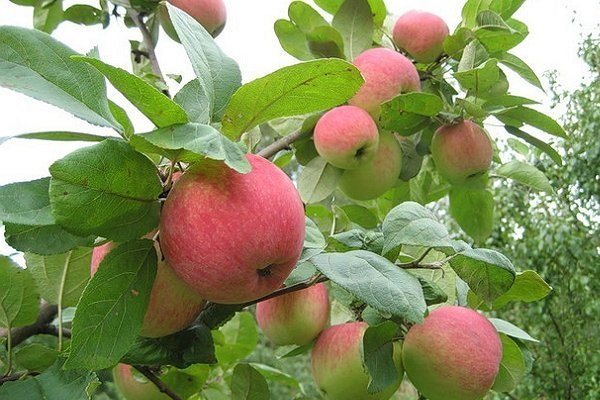

The disadvantages of the variety are as follows:
- the ripening time of apples on one tree may differ;
- if the summer is dry, then the tree washes to shed the harvest;
- the plant suffers from scab, especially if the weather is rainy;
- storing the crop or transporting it is problematic;
- it is impossible to make jam or preserves from apples, they are also not suitable for fermentation;
- the consumer period is rather short;
- fruiting is irregular and uneven.
Growing in different regions
Depending on the region of growth, there are some peculiarities of cultivation.
- Southern regions... Ideal weather conditions for growing apples. However, it is worth keeping a close eye on the water table. The presence of strong spring return frosts in the southern regions is also important, from which even frost-resistant varieties can suffer.
- Middle lane... When choosing the most successful varieties for the middle lane, one should focus on frost resistance. Therefore, Grushovka is a very good option, because the variety is zoned for central Russia.
- Siberia... Varieties suitable for the harsh climatic conditions of Siberia must be frost-resistant, resistant to common diseases, and capable of forming a high-quality crop at different ripening periods. Grushovka Moskovskaya belongs to low-winter summer varieties suitable for growing in Siberia.
- Moscow suburbs... The region is characterized by harsh winters and sultry summers, often with heavy rainfall. The pear is well adapted to growing in the Moscow region, it can be affected by scab, but there are many ways to deal with this problem.
Grushovka is an old variety that is not of commercial interest due to the fragility of storage and poor transport tolerance. But at the same time, the variety is loved by a huge number of gardeners for its taste, frost resistance of trees and high yield.
Landing
Most of all, the apple tree of this variety loves loamy, sandy loam or soddy soils. In general, the tree is unpretentious, so the planting rules are the same as for many fruit crops. Do not plant an apple tree in a wet area with stagnant liquid or in the shade.
Young plants are planted around the end of April or early May, or in September-October. The pits should have steep slopes, 100 centimeters wide and 60 centimeters deep. Fertilizers are applied 4 days before planting (25 kilograms of humus). In the formed hole, you need to make a depression for the root system.
It is best to land with garter stakes. This will make the seedlings more resilient. Drive in a stake just before placing the plant, placing it on the north side of the trunk to protect the apple tree from frost and heat.
Landing should be in-depth, it is required to make rollers along the borders of the pit. Immediately after planting, 30 liters of water are poured in, and then mulching is carried out using humus or compost.
Than especially a fruit tree
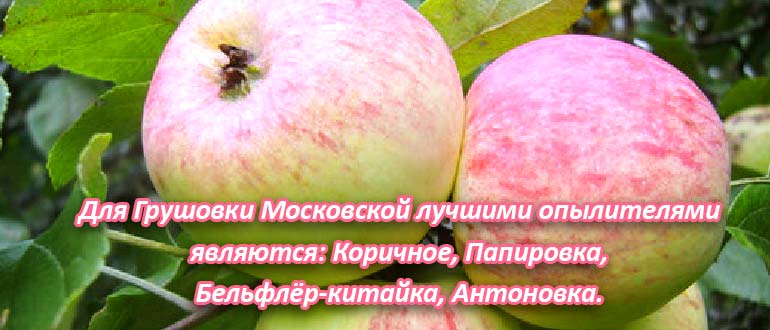

The apple tree of Grushovka Moscow grows up to 7 m. The shape of the crown under the influence of constantly high yields changes with age from pyramidal to spherical up to 8 m in diameter. Branches are long, strong, spreading, well leafy.
The root system of the apple tree is represented by vertical and horizontal roots. The former hold the trunk in the soil and get food from deep soil layers. Horizontal, in addition to nutrients, supply air to the tree.
There are a lot of them. And they are intended for the absorption of water with mineral salts dissolved in it and the release of decay products outside. This type of roots is located at a depth of up to half a meter directly under the crown. Therefore, it is in this layer that the fertilizers applied will be useful.
Fruiting varieties
Despite the resistance of the variety to cold weather, early frosts and snowy winters will not do it good.For protective purposes, the near-trunk area is mulched with compost and the trunk is wrapped in cloth so that it does not let air through.
Fact: Wrapping the tree can keep it safe from hares and other rodents.
Care
In order for a tree to please with a bountiful harvest, you need to provide it with proper care. For the intensive development of the apple tree after the first flowering, gardeners recommend removing up to 85% of the flowers. 50% of the apples must be picked while still in the green stage. Due to this, the volume of the harvest is normalized.
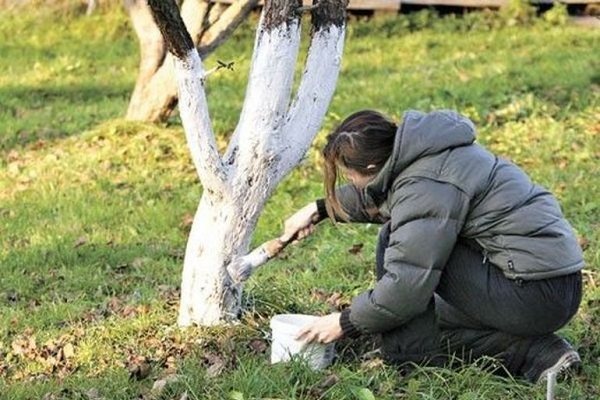

The plant is afraid of drought, therefore, it is necessary to properly organize the irrigation regime: activities are carried out about 2-3 times a week. They finish watering it only by the end of August, so that it is properly prepared for winter.
The tree trunk circle is required to regularly loosen and pull out weeds growing nearby. In the fall, to make the apple tree easier to cope with the cold, mulching with horse humus is carried out.
In late autumn, in order to protect the apple tree from lichens and mosses, as well as to destroy parasites and fungi, it is recommended to whitewash the trunk. All damages are pre-closed with a garden varnish.
The following composition is suitable for whitewashing: 6 liters of water + 2 kilograms of quicklime + a kilogram of greasy clay. After thorough mixing, add the skim milk. They process not only the trunk, but also the bases of large branches.
You don't need to cover the tree for the winter, although it is worth taking care of protection from rodents. To do this, you can use simple nylon tights, plastic bottles, black plastic bags or spruce branches.
As soon as the snow has completely melted, the protective heaps must be removed. Otherwise, the trunk will overheat, and the kidneys will open before the required moment.
Apple-tree Grushovka Moscow
Grushovka Moscow is famous for its frost resistance. This is probably why it is so often found in our gardens in the Moscow region. She tolerates even severe frosts in winter with dignity. The variety is called that way, not because it tastes like a pear, but because of its pear-shaped crown. The pulp resembles a little pear pulp, it is the same loose and yellowish. When planting seedlings, I advise you to pay attention to the weathered area - it is important that it is not open and protected from the wind. This apple variety, like many others, requires careful maintenance: watering in the evening in summer, not only in dry weather, pruning and crown formation, fertilizing with fertilizers and mandatory whitewashing. Having done such simple measures, you can enjoy a rich harvest every year, starting from the age of 4 years of age of the apple tree.
Grushovka Moskovskaya ripens early, in fact, for this it is appreciated by many gardeners. The variety attracted me with its frost resistance. It has been growing on the site for 7 years already, has endured winter frosts down to minus 40 degrees. Fruiting from year to year, but the harvest is different - sometimes thick, sometimes empty. Additional watering is required in summer. Drought is hard to bear. The tree is large and takes up a lot of space. The root system is developed. The size of apples is average (about 100-120) grams. The skin is thin, easy to bite. There is not much acid, but it is present in apples. Of course, it doesn’t reduce the teeth. The taste is bright, full-bodied. The aroma is very pleasant. After harvesting, they are stored for up to 2 months. In general, the variety is not intended for storage. I advise you to process most of it, you get excellent aromatic dried fruits.
Grushovka Moskovskaya has been growing here for 10 years! We live in Siberia, the conditions for growing apples are completely different from those in the south, but the apple tree can withstand frosts and bears fruit every year! A huge plus of this variety is the early ripening of the fruits. Already in July and August, we can afford to feast on apples. They do not all ripen at the same time, which is very convenient. For 2-3 months we have been eating our apples, but they are poorly stored. The apples are fragrant, tasty and juicy.Covered on top with a layer of wax, it seems that oily - so dense plaque. But the aroma is wonderful. The harvest is quite excellent. Each year, however, in a different way. This apple tree also has disadvantages - it is exposed to scab. We have to do blue spraying. I advise you to choose the right planting site: the apple tree should be surrounded by the sun on all sides. There should be no near groundwater. In the fall, be sure to protect the bark from rodents. The rest is a very good variety!
Grushovka ripens earlier than anyone else, almost at the beginning of August. Apples taste sweet and sour and very juicy. The yield is very high. I can't say in kg, but a 10-year-old tree is always completely covered with fruits. The apples are beautiful, with a red barrel. The tree is about 5 meters high, with a very spreading crown. High resistance to frost. Not a single branch has ever frozen. Among the disadvantages is fruiting in a year. There was also a spider mite problem. She treated it with chemicals in the fall, after harvesting, and in the spring she thoroughly whitewashed the trunk. Now there is no mass infection, only single leaves come across. The yield increased immediately after such a procedure. Preparations for the winter from Grushovka are excellent and homemade apple wine is very tasty.
I planted Grushovka, because it is the most frost-resistant variety. I bought the seedlings from us, in the Moscow region, in the Yegoryevsky Reserve 5 years ago, after 3 years the first apples appeared, and this summer they harvested a normal harvest. In the first 3 winters, I wrapped the seedlings, now I stopped, because the trees, although young, have already grown stronger. Apple trees grew large and with a wide crown, took up a lot of space on the site. The trees are beautiful, slender, all branches are even. We harvest in August. This year we got almost 80 kg from 3 apple trees. Unfortunately, they are not stored for a long time, and they are not particularly suitable for preservation, because the jam turns out to be bland and not very fragrant, but more or less suitable for juices. The fruits themselves are small, slightly flattened, with a thin skin, which is covered with wax and glistens from this. It tastes more sweet than sour, but very juicy and aromatic. The tree is quite finicky, requires regular watering, loves the sun and the absence of wind. This variety is not particularly resistant to diseases, so Grushevka must be sprayed. I do this twice - during bud break and after flowering.
Video Review
Top dressing
The apple-tree of the "Grushovka Moskovskaya" variety is fed from the second year of life. At the beginning of spring, ripe horse manure or humus is added to the soil in a ratio of 10 kilograms per square meter. As a mineral fertilizer, 500 grams of urea is used.
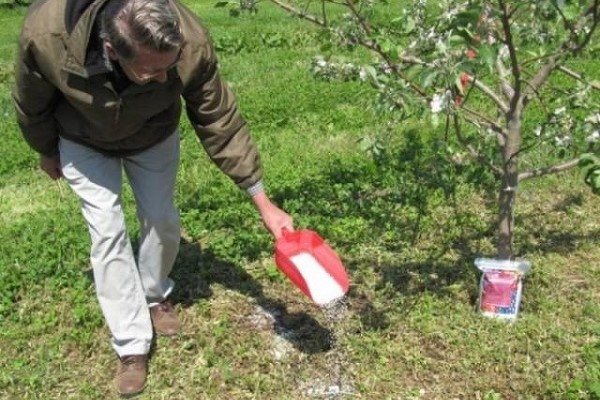

In autumn, the plant can be supported with complex fertilizing, which does not contain nitrogen (or those in which it is not more than 5%). As an example, we can take the product "Autumn Kemira", which is introduced at the rate of 40 grams per square meter. The granules are simply scattered dry around the apple trees, and then dug up the soil.
Existing subtypes
Breeders could not pass by this variety, which has such significant advantages.
Back in the 1940s, on its basis and White filling, the early Grushovka variety was obtained.
The new species has larger fruits (at least 80 g), it ripens 2 weeks earlier and is much more resistant to disease. All other characteristics are close to the original form.
In 1957 Grushovka winter appeared. It was the result of crossing the Grushovka Moskovskaya and the Kronselsky transparent species.
Here we managed to eliminate the main disadvantage of the parent variety - its short shelf life. We were able to stretch this time until the end of spring. But at the same time, frost resistance deteriorated.
Perhaps for this reason, this subtype has not become widespread. It ripens by mid-autumn. The two previous varieties are summer varieties.
Testimonials
Marina, Moscow region: I'm just a fan of Grushovka! It seems to me that these are the most delicious apples of all that I have tried. The tree does not require special care, and for me it is ideal, since sometimes because of work I cannot come to the country. The harvest is simply incredible, about 100 kilograms. I am very pleased.
Nikolay, Ufa: About 20 years ago, my parents planted several Grushovka apple trees. All of them consistently bring us crops, and in large quantities. The only sad thing is that sometimes we do not have time to eat, even if we distribute it to our neighbors: they are not easy, these apples. A couple of times our trees hurt, but we noticed them in time and treated them. Even the harsh winters these apple trees endured with dignity. Suitable for our area.
Variants
Semi-dwarf
The half-dwarf Grushovka can only be vaccinated. It is of little interest, except for sellers, since on the 15-17th year the union bursts. Not recommended by professionals for industrial gardening.
Dwarf
With dwarf, especially vegetatively propagated stock, the situation is even worse.
Due to the multiple fertility on the part of the Grushovka scion and poor adhesion on the part of the rootstock and without proper support such trees are often split completely or in half.
Therefore, it is risky to establish large plantations.
Columnar
On the Internet, information is spread that there is such a columnar type. Like, he characterized by increased cold resistance, small apples, lemon color with a slight rosy cheek, sour taste.

